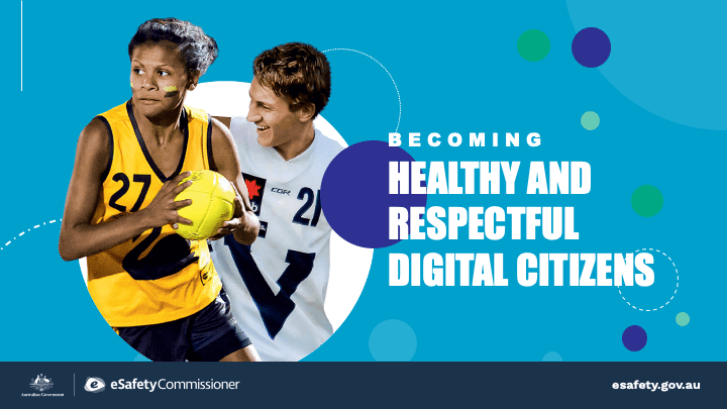Rewrite Your Story

About this resource
Target audience
Level
Lower secondary, Middle secondary
Keywords
Type of resource
8 short videos, 8 lesson plans, interactive reflection activity
Timeframe
15 to 45 minutes per activity, each including a 1 to 2 minute video
Australian curriculum
Key learning areas
General capabilities
Key outcomes
Students will better understand cyberbullying and image-based abuse, including when and how to seek help. They will be encouraged to consider and discuss these online harms, their impacts and the actions they can take against negative online behaviour.
By the end of the learning, students will:
- be able to define cyberbullying and image-based abuse
- understand the concept of ethical online behaviour
- critically analyse the impact their decisions and actions can have on themselves, their family members, the school community and others
- be familiar with relevant eSafety resources and services
- how to report cyberbullying and image-based abuse.
Using this resource
Select one of the eight award-winning short videos dealing with different cyberbullying scenarios and use the lesson plan to lead a class discussion about it.
Each lesson plan also includes instructions for exploring relevant eSafety resources and for an optional personal reflection activity.
The length of the lesson will depend on the aspects of cyberbullying in each video and the questions you choose to lead the group discussion.
NOTE: The Jarrod scenario also deals with the issue of image-based abuse, which means sharing intimate images or videos without the consent of the person shown.
You can also send your students the link to the student page and let them explore the videos and the interactive reflection activity on their own.
You can’t undo the past, and you can’t change the actions or words of other people, but you can Rewrite Your Story.
Lesson plans
Individual lesson plans
Interactive lesson plan
Combined interactive lesson plan – Zach, Cal, Jarrod, Kara.
Includes questions and activities to use with the RYS videos and eSafety Young People pages.
Videos and reflection activity
Watch the videos and complete the interactive reflection activity on the Student page.
Social media changes
As of 10 December 2025, certain social media platforms won’t be allowed to let Australians under 16 have an account. Under-16s are able to see publicly available social media content that doesn’t require logging into an account.
What you need to know:
- Educators need to be aware that age restrictions may apply to platforms they currently use for educational purposes and to communicate with their school community.
- As of 10 December 2025, Facebook, Instagram, Kick, Reddit, Snapchat, Threads, TikTok, Twitch, X and YouTube are required to take reasonable steps to prevent Australians under 16 from having accounts on their platforms. See the latest list.
- Find out more about the exclusions for educational tools such as learning management systems.
- Schools may need to explore alternative methods for communicating with parents and students.
- For further guidance, including if educators will be able to use their own accounts to share age-appropriate education materials, please refer to school or education sector policies and procedures.
Find out more at eSafety’s What do the social media age restrictions mean for educators.
